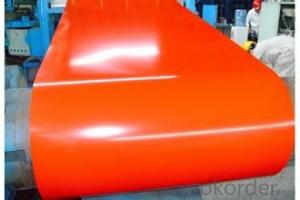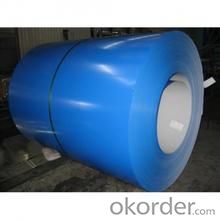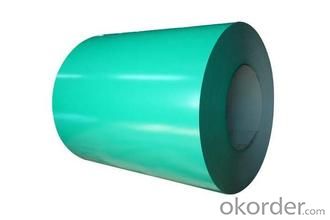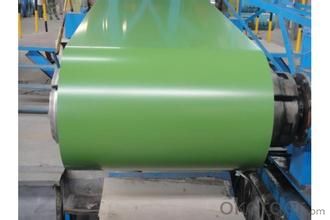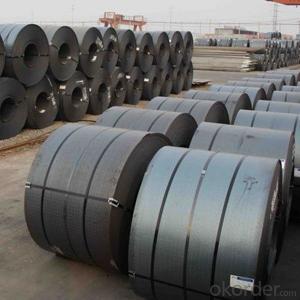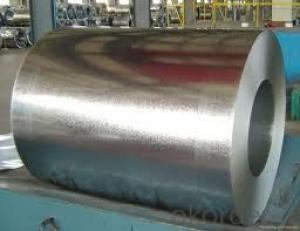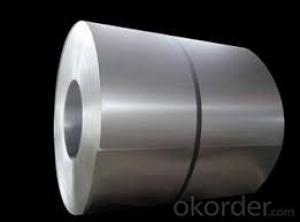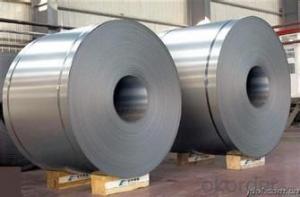excellent cold rolled steel coil / sheet / Plate -SPCE
- Loading Port:
- Tianjin
- Payment Terms:
- TT OR LC
- Min Order Qty:
- 100 m.t.
- Supply Capability:
- 5000000 m.t./month
OKorder Service Pledge
OKorder Financial Service
You Might Also Like
Description:
The raw material of cold rolled steel coil/sheet is high quality hot rolled product, and after pickling, kinds of new technology and new process of global cold rolling production have been applied. Therefore the manufacturing, home appliance, automobile etc.
Specification:
COLD ROLLED STEEL | |
Thicknenss | 0.10mm-4.00mm |
Width | 600mm-2000mm |
Sheets length | 1200-6000mm |
Coil inner diameter | 508-610mm |
Surface treatement | matt finish/bright finish,oiling/dry, bright anneal/black anneal |
Coil weight | 3-5t |
Application:
1. Refrigerators, cabinets, power distribution baords and drums.
2. Automobile floor and roof panels.
3. Automobile fenders and quarter panels
4. Automobile fenders and quarter panels
Images:
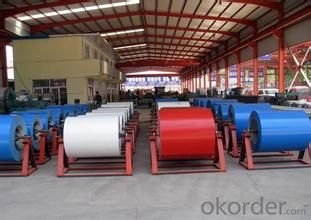
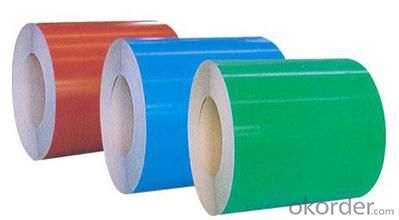
We sincerely hope to establish good and long-term business relationship with your esteemed company.
- Q: Any details about JinSong Ferritic Stainless Steel?
- The steel is added with Mo on the basis of 10Cr17 steel to improve its corrosive pitting resistance and crevice corrosion resistance; it has higher intensity and better salt solution corrosion resistance than 10Cr17 steel. The steel is mainly used in making automobile hub bearing, fastener and external decoration of automobile.
- Q: where can i find information online about steel residential homes that use solar energy?
- Steel okorder
- Q: What are the different methods of perforating steel coils?
- There are several methods used for perforating steel coils, each with its own advantages and applications. 1. Mechanical Punching: This is one of the most common methods used for perforating steel coils. It involves using a mechanical press to punch holes in the coil using a punch and die set. The size and shape of the holes can be customized based on the design of the punch and die set. Mechanical punching is efficient and can produce high-quality holes with consistent results. 2. Laser Cutting: Laser cutting is a popular method used for perforating steel coils, especially when complex hole patterns or intricate designs are required. It involves using a high-powered laser beam to cut through the steel coil, creating precise and clean holes. Laser cutting offers flexibility in terms of hole size, shape, and spacing, and it can be computer-controlled for precise and repeatable results. 3. CNC Plasma Cutting: This method involves using a high-velocity plasma jet to cut through the steel coil and create perforations. CNC (Computer Numerical Control) technology is used to guide the plasma cutter, enabling precise and accurate hole patterns. CNC plasma cutting is ideal for thicker steel coils and can produce larger holes compared to laser cutting. 4. Waterjet Cutting: Waterjet cutting uses a high-pressure jet of water mixed with an abrasive material to cut through the steel coil. This method offers versatility in terms of hole size, shape, and material compatibility. Waterjet cutting is known for its ability to produce intricate and precise perforations without heat-affected zones or distortion. 5. Electrical Discharge Machining (EDM): EDM is a method that utilizes electrical discharges to erode the material and create perforations in the steel coil. It involves using a conductive electrode and a dielectric fluid to generate controlled sparks that remove material and form holes. EDM can be used to create complex shapes and patterns and is particularly suitable for hard materials. The choice of method depends on factors such as the desired hole size and shape, the thickness and type of the steel coil, the required precision, and the production volume. Each method has its own advantages and limitations, and it is important to select the most appropriate method based on the specific requirements of the perforated steel coils.
- Q: How are steel coils used in the production of heating and cooling systems?
- Steel coils are used in the production of heating and cooling systems as they serve as the primary component for heat transfer. These coils are designed to efficiently transfer heat or cool air, allowing for the effective regulation of temperature in heating and cooling systems.
- Q: and is that different from the components of steel
- Making steel is very energy intensive. Mining the raw ore requires a lot of machinery that uses fuel or electricity . Transporting the ore requires a lot of fuel. Refining not only uses a lot of electricity but coal is added to change the iron ore into steel.
- Q: which type of carbon steel does not have manganese
- None. Mn is a trace impurity in all steels, if you look carefully enough. If you want to find a steel where Mn is not intentionally added, start looking at the alloy composition specifications, there are hundreds of steels. Why are you worried about Mn? Mn is typically added to steels for a very good reason.
- Q: How are steel coils used in the manufacturing of industrial mixers?
- Steel coils are used in the manufacturing of industrial mixers as they provide a strong and durable structure for the mixer body. The coils are shaped and welded to create the necessary components, such as the mixing chamber and blade supports. This ensures that the mixer can withstand the high forces and vibrations involved in mixing large quantities of materials in industrial applications.
- Q: How are steel coils inspected for surface finish after processing?
- Steel coils are typically inspected for surface finish after processing using visual and tactile methods. Trained inspectors visually examine the coils for any imperfections, such as scratches, dents, or uneven coating. They also run their fingers over the surface to detect any irregularities. Additionally, advanced technologies like digital imaging systems and laser scanners are employed to provide accurate and detailed analysis of the surface finish.
- Q: Can steel coils be used in corrosive environments?
- Steel coils have the potential to be utilized in corrosive environments, but their effectiveness relies on the specific steel used and the degree of corrosiveness in the environment. For instance, stainless steel coils furnish exceptional resistance against corrosion and can function effectively in a diverse range of corrosive surroundings, even those with elevated levels of moisture, chemicals, or salt. Conversely, alternative types of steel coils might necessitate supplementary safeguards, such as coatings or galvanization, to augment their resistance to corrosion. It is imperative to carefully evaluate the particular corrosive elements present in the environment and select the appropriate steel type and protective measures to guarantee the long-lasting and durable performance of the steel coils.
- Q: What are the common thicknesses available for steel coils?
- The common thicknesses available for steel coils depend on the specific requirements and applications. However, there are some standard thicknesses that are commonly produced and used in various industries. Generally, steel coils can have thicknesses ranging from 0.005 inches to 0.5 inches or even more, depending on the type of steel and its intended use. For example, in automotive manufacturing, where steel coils are used for body panels and structural components, the common thicknesses can range from 0.5 mm (0.020 inches) to 3 mm (0.118 inches). In the construction industry, where steel coils are utilized for roofing, siding, and structural framing, the common thicknesses can vary from 0.014 inches to 0.062 inches, depending on the specific application and structural requirements. Similarly, in the manufacturing of appliances, such as refrigerators, washing machines, or HVAC systems, steel coils with thicknesses ranging from 0.018 inches to 0.035 inches are frequently used. It is worth noting that these are just some of the common thicknesses, and there can be variations based on the specific requirements of different industries and applications. Additionally, custom thicknesses can also be produced upon request to meet unique needs in various sectors.
Send your message to us
excellent cold rolled steel coil / sheet / Plate -SPCE
- Loading Port:
- Tianjin
- Payment Terms:
- TT OR LC
- Min Order Qty:
- 100 m.t.
- Supply Capability:
- 5000000 m.t./month
OKorder Service Pledge
OKorder Financial Service
Similar products
Hot products
Hot Searches
Related keywords
